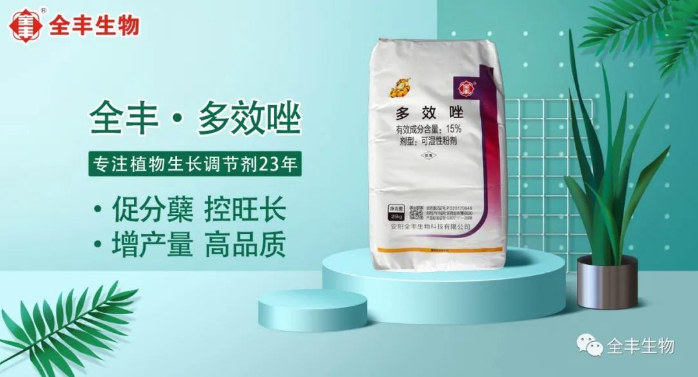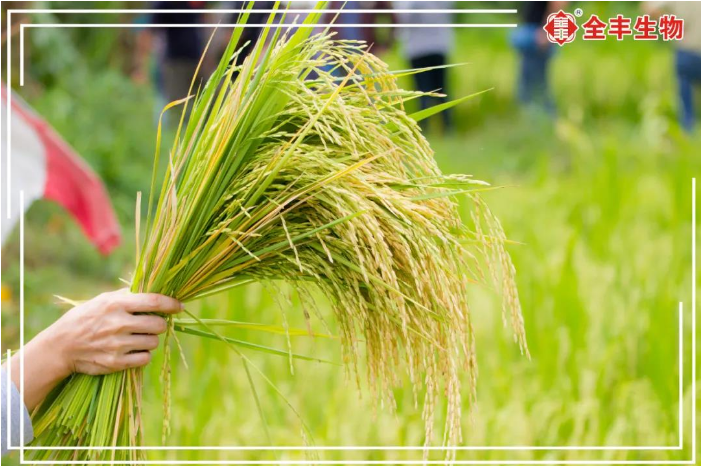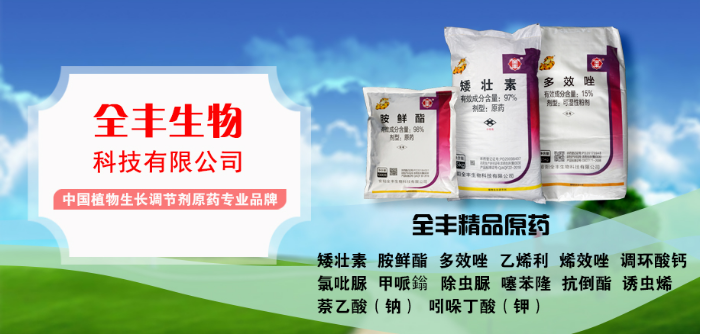Chemical control and lodging resistance of rice
Time:2023-01-31 Follow:1071
Rice lodging is a difficult planting problem in the process of rice planting management. Because rice is prone to extreme weather such as strong wind and precipitation in the later stage of growth, once lodging is caused, it will affect the yield in the later stage. Therefore, we must pay attention to the problem of rice lodging in the process of rice planting and management.
1、 Causes and solutions of lodging
1. The field is not sunned in time, the field is not sunned in place, and the root system cannot be well planted, resulting in the root system is not firm and prone to collapse.
2. Inappropriate management of water layer and long-term deep water condition of rice resulted in soft stems, long basal internodes and reduced root hypoxia resistance.
3. The planting density is too large, resulting in dark fields and thin stems; The transplanting depth is deep, the tillering node is high, the seedlings are long and easy to collapse.
4. The main reason for unreasonable fertilization is that too much nitrogen fertilizer is applied too late, the stems are thin and weak, and prone to lodging.
5. The occurrence of serious diseases and insect pests is prone to lodging; Disaster weather such as hail caused rice to collapse.
In order to reduce the probability of rice lodging, measures should be taken such as reasonably controlling the water content of the rice field, timely sunning the field and putting it in place, reasonably controlling the density of seedlings and not too deep, controlling the amount of nitrogen fertilizer, and timely preventing and controlling diseases and pests. The important measure to prevent rice lodging is chemical control of rice, that is, plant growth regulator control. The chemical control of rice must be used from the early stage of tillering to the early stage of jointing according to the growth trend in the field, and the appropriate dosage must be mastered.
Calcium tranexate: the rice chemical control agent is Quanfengshi Bida, and the effective ingredient is 5% calcium tranexate. Shipida is a new generation of chemical control and production increasing agent of Quanfeng Company, which has the characteristics of high activity and no residue. The effervescent granule dosage form makes the drug use more environmentally friendly. On the one hand, calcium cyclamate can reduce the length of internode, dwarf the height of plant base, increase the mechanical strength and improve the lodging resistance of rice; On the other hand, it can reduce the rate of shrunken grain and increase the number of solid grains, thus increasing the yield per unit area. Tranexate calcification solves the contradiction between lodging resistance and high yield of rice. On the premise of ensuring a certain plant height and planting density of rice, it can promote the filling of inferior grains of rice, improve the lodging resistance and yield increase ability of rice from the biological characteristics, so as to achieve the purpose of cultivation regulation.
Advantages of calcium cyclamate compared with triazole control products:
1. High activity of leaf surface absorption
2. Short half-life, low toxicity and no residue

Paclobutrazol: use 100~133 g of 15% paclobutrazol wettable powder per mu, add 100 kg of water to prepare paclobutrazol solution with a concentration of 150~200 mg/L. Spray the stems and leaves with the prepared solution before jointing, which can shorten the internode, thicken the stem wall, develop the mechanical tissue, and effectively prevent lodging.

CCM: At the beginning of jointing, 50~100g of 50% CCM water solution and 50 kg of water per mu are added to prepare the concentration of 500~1000mg/L of CCM solution. Spraying on the stems and leaves can make the rice plant short and strong and prevent lodging.

Ethephon: For late-season rice seedlings, spray 40~50 kg of Ethephon solution with a concentration of 3000 mg/L on the leaves per mu, or spray 50 kg of Ethephon solution with a concentration of 1500 mg/L on 20~30 days after planting in the field, which can effectively inhibit the growth of plant height and increase tillering after treatment.

2、 Principles of rice chemical control:
The main role of rice chemical control is to reduce the spacing of 1-3 nodes at the base. The formation period of the base node is the tillering stage of rice. At this time, the application of pesticide can shorten the length of the base node, increase the thickness of the base node, dwarf and take root, and promote the absorption of water and fertilizer; Promote the formation of silicified cells in rice, improve the flexibility and strength of stems, and effectively improve the lodging resistance of rice in the later stage. At the same time, it can also increase the effective tillering quantity, reduce the ineffective tillering, make the leaves dark green, improve the photosynthetic efficiency, strengthen the plant, coordinate the transformation from vegetative growth to reproductive growth.

3、 Mistakes of rice control:
Rice chemical control is an important measure to prevent lodging, which is widely used in rice production. However, there are some misunderstandings in actual production. One is that people are blind to the selection of chemical control agents. The second is that people mistakenly believe that the shorter the rice is, the better the rice is. The stems and leaves of plants are the source of organic matter production and yield formation, which is called the source of plants. The ear of rice is the storage organ of yield, which is called the sink of rice. This is the source-sink theory. The source and sink promote and restrict each other. The source and sink promote each other, and the sink promote the source. The source and sink can not have the output that can only be achieved through harmonious development. If we blindly pursue rice dwarfing, then the source of rice cannot be guaranteed, affecting the high yield of rice. The chemical control of rice can shorten the internode 1-3 at the base, thereby reducing the plant height, enhancing the flexibility of the stem, promoting rooting, increasing the effective tillering, and promoting the transformation from vegetative growth to reproductive growth. This is our original intention of chemical control of rice to prevent lodging, not to blindly reduce the plant height.





